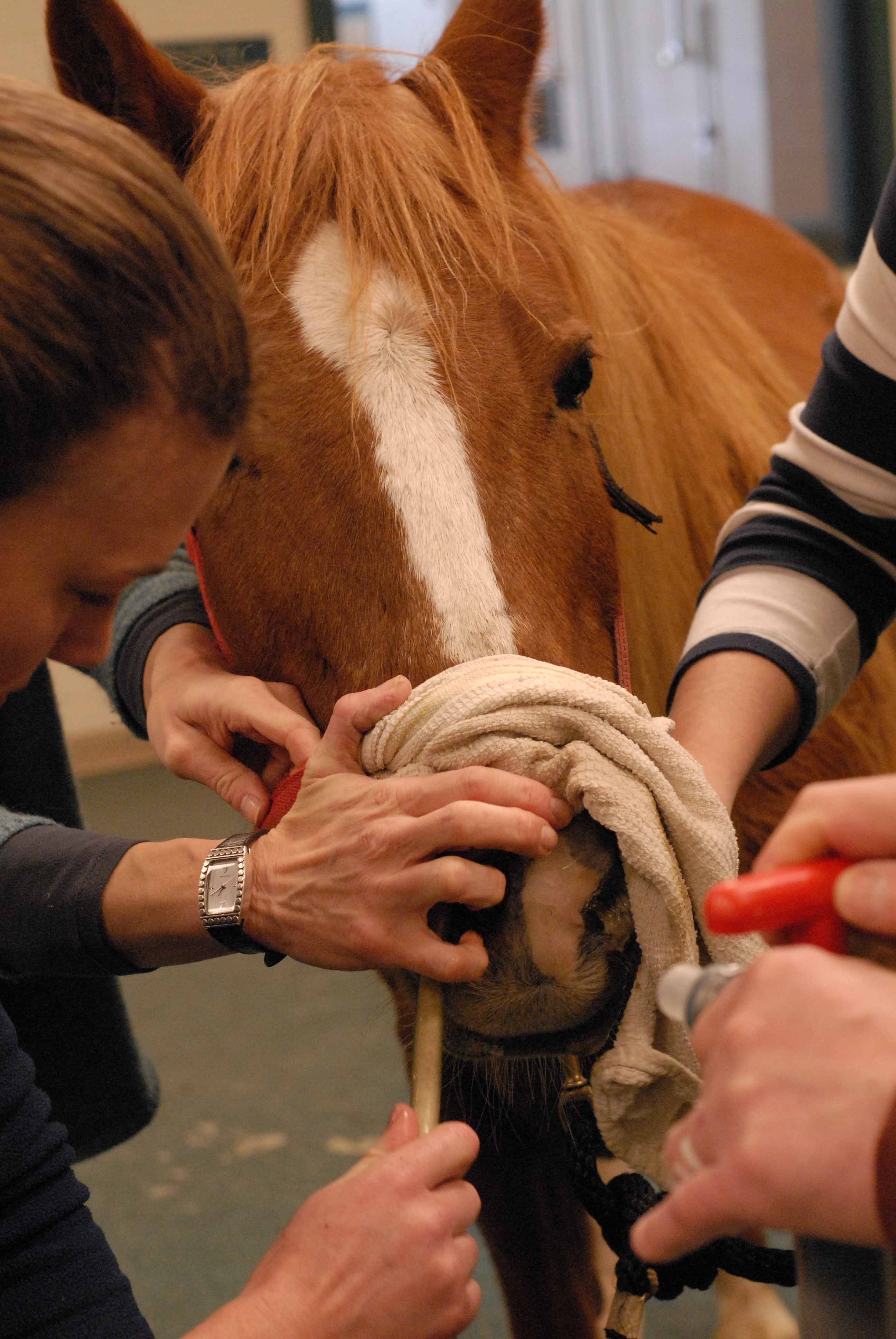
In the horse, a diagnosis of choke refers to an obstructed esophagus. Unlike humans who experience this condition, a horse with choke can still breathe. However, the horse cannot move food or saliva to his stomach.
Horses with choke usually suffer significant distress and discomfort. They typically display the following signs: anxiety, drooling, difficulty swallowing, extension of the head and neck, coughing and regurgitation of food and frothy water on the muzzle, stall floor and walls, feeder and water bucket, and on their front legs.
Although some cases of choke are mild and resolve spontaneously, prolonged episodes can result in a permanently damaged esophagus, aspiration pneumonia or death. We consider any choke episode to be an emergency. If you think your horse has choke, contact your veterinarian immediately.
Until a veterinarian arrives, first aid consists of removing all feed and water, providing quiet stall rest and abstaining from trying to relieve the choke. Trying to relieve the obstruction by pouring liquid down the horse’s throat or introducing a hose or tube will not resolve the condition and will very likely make things worse.
Risk factors that can predispose a horse to choke include: dry foods, feeding large treat objects (whole apples and carrots), inadequate access to water, aggressive feeding behavior (bolting of feed), dental disease and ingestion of foreign objects (usually a problem limited to wood chewers).
A choke diagnosis rests on the patient’s history, the clinical presentation of the condition and the inability to pass a nasogastric tube into the stomach. On occasion, diagnostic imaging modalities (radiography, ultrasonography, endoscopy) are used to accurately assess the size and nature of the obstruction.
Intravenous sedation can relieve a horse’s anxiety and relax the musculature of the esophagus and the sphincter leading into the stomach. The sedative’s effects can facilitate the process of passing a nasogastric tube to the point of the obstruction so that the veterinarian can dislodge and move it via repeated flushing of volumes of water through the nasogastric tube.
In the rare case where local flushing of the obstruction is unrewarding, esophagostomy surgery can be performed. After appropriate sedation, local anesthesia and surgical-site preparation, the surgeon makes a linear incision over and down to the obstruction. The blockage is then removed manually. The incision is often left open for a time and closed only after tissue inflammation has subsided.
Aftercare for choke should consist of a water-only diet for at least 12 hours and nonsteroidal anti-inflammatory drug administration for several days. If any possibility of aspiration of esophageal contents into the respiratory tract exists, an appropriate antibiotic is also given. Once solid food is reintroduced, it is best to soak the food before feeding. Offering soaked feed for several days can help the transition from liquids to solids occur uneventfully.
As with any health concern, preventing problems is far preferable to treatment. You can minimize your horse’s risk of choke by feeding treats in small pieces, withholding all solid foods following sedation for at least an hour, providing free-choice palatable water at all times, ensuring that your horse’s teeth are in good condition, soaking dry foodstuffs prior to feeding and taking measures to prevent behaviors such as wood-chewing and aggressive eating.











